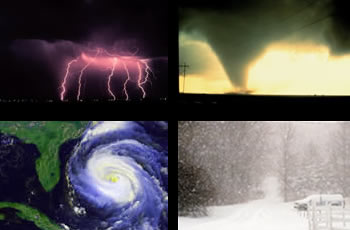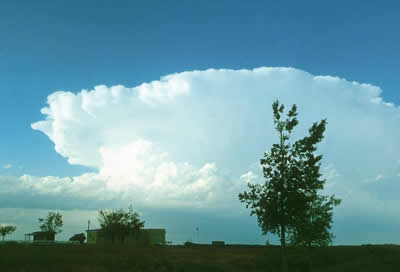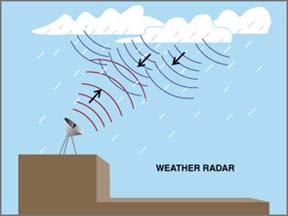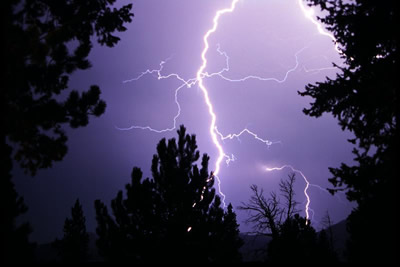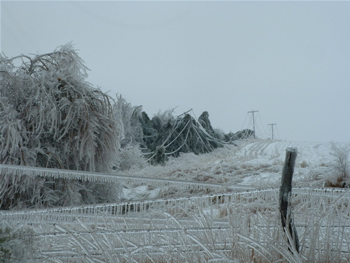Click on image for full size
Images Courtesy of NOAA Photo Library, NOAA Central Library; OAR/ERL/National Severe Storms Laboratory (NSSL), NASA, and National Weather Service Forecast Office of Milwaukee/Adam Harden
Related links:
Current U.S. Advisories/Watches/Warnings
Guide to Advisories, Watches, and Warnings
When Nature Strikes: Flash Floods!
When Nature Strikes: What Should You Do When Flash Floods Threaten? Classroom Activity
When Nature Strikes: Tornadoes!
When Nature Strikes: What Could You See as a Tornado Approaches? Classroom Activity
When Nature Strikes: Hurricanes!
When Nature Strikes: How Well Can Hurricane Tracks and Intensities Be Forecast? Classroom Activity
Examples of Advisories, Watches, and Warnings for Weather Events
Below is a list of different weather advisories, watches, and warnings.
Severe Thunderstorm Watch: A severe thunderstorm watch is issued when a thunderstorm with strong winds and/or hail the size of a penny or a dime is possible
Severe Thunderstorm Warning: A severe thunderstorm warning is issued when severe thunderstorms have been seen or found on the radar. Once this warning has been issued, it is best to be prepared for lightning, heavy rain, strong winds, and large hail.
Tornado Watch: A tornado watch is issued when tornadoes are possible in an area during a certain time.
Tornado Warning: A tornado warning is issued when a tornado has been spotted or found on the radar. Shelter must be taken immediately.
Hurricane Watch: A tropical storm or hurricane is possible for coastal areas. Be ready in case a watch is issued.
Hurricane Warning: A hurricane warning is issued when a storm will come through an area in the next 24 hours. Very high wind speeds will be part of the storm.
Winter Weather Advisory: A winter weather advisory is issued when a low pressure system brings severe winter weather like snow, freezing rain, or sleet.
Winter Weather Watch: A winter weather watch is issued when there is potential for heavy snow or large ice to fall. The watch is given out 24-36 hours before the storm. Every city has different criteria for giving out this watch.
Winter Storm Warning: This warning is issued when a winter storm is causing or is forecasted to cause heavy snow or large ice to fall. Every city has different criteria for giving out this warning. Blizzard Warning: A blizzard warning is issued when there is falling or blowing snow and winds, making it difficult to see for several hours.


